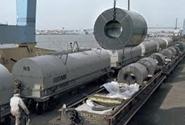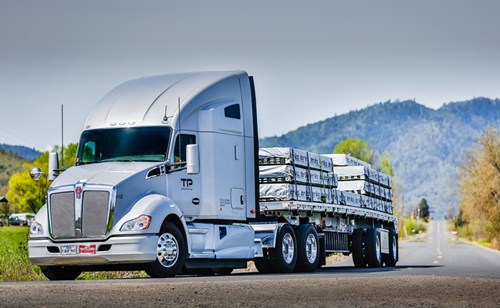Shipping and Logistics

Shippers Hope for Stronger 2017
Written by Sandy Williams
January 7, 2017
Shipping wound down for 2016 with mixed reports. Seaborne rates hit bottom and began an upward climb. U.S. river traffic was sluggish due to holidays and weather. U.S. rail volume, down overall for 2016, picked up in the final week of December. U.S. truck rates increased and shipping volume surged due to holiday delivery and the need to move freight before year end. Shipping associations are looking with cautious optimism for growth of the economy in 2017 that will lead to infrastructure spending and regulatory changes that will boost volumes and rates.
Seaborne
The New Year is starting out very slowly for the seaborne freight market but sentiment is positive, according to the latest MID-SHIP Report. Break bulk shipments have benefited from iron ore and coal imports from China. Freight rates and fuel prices were on the rise as 2016 closed.
Rates in the Cape size and Panamax markets are finding a bottom, says MID-SHIP, while Supra and Handy size spot market appear to be strengthening in the coming weeks.
Wrote MID-SHIP, “Freight market levels continuing to slowly improve, especially from the second quarter onwards. We ended 2016 with pockets of strength, which indicate a narrowing between supply and demand. We see continued steady growth on the demand side.” Iron ore imports to China are expected to surpass one billion tonnes in 2017.
The Baltic Dry Index closed on Friday, Jan 6 at 963. In the past 52 weeks the index has ranged between 290 and 1,257.
River
Barge traffic is experiencing delays to heavy icing on Northern rivers while fog has been a significant problem in the Southeast. The barge market is starting the New Year with soft rates and is expecting another year of relatively low coal volumes, sluggish imports, strong grain volumes and relatively high supply of equipment, said MID-SHIP.
Rail
Rail volume was down 5 percent in 2016 compared to 2015 according the Association of American Railroads. Total carload traffic was 13,096,860 carloads in 2016, down 8.2 percent while intermodal containers and trailers were down 1.6 percent to 13,490,491 units.
December total rail volume was up 2.8 percent year over year and rail traffic for the week ending Dec. 31 was up 7.7 percent year over year.
“Last year was challenging for freight railroads,” said AAR Senior Vice President of Policy and Economics John T. Gray. “Rail carloads were down for the second consecutive year, due mainly to a weak manufacturing economy and turmoil in energy markets, while intermodal failed to set its fourth straight annual record. That said, there are signs that the economy may be gradually returning to a period of growth.”
AAR president and CEO Edward Hamberger said the association will advocate for a “simpler and fairer tax code” to promote US economic growth as well as push for sustainable funding for infrastructure.
“The freight rail industry is capital intensive and must spend massive amounts of its money to maintain infrastructure and equipment. Current STB proposals would inhibit railroads’ ability to continually invest the amount of capital needed to make the 140,000-mile network work for Americans. The Board should be cognizant of the economic impact our industry and promote regulations that enhance job growth and development,” said Hamberger.
Trucking
The most recent report on truck tonnage from the American Trucking Association reveals the For-Hire Truck Tonnage Index surged 8.2 percent to 142.4 in November after a 0.3 percent decline in October. The all-time high for the index was 144 in February 2016.
“2016 has been an interesting year for truck tonnage, with monthly gains and decreases as large as I can remember, which suggests seasonality is different this year,” said ATA Chief Economist Bob Costello. “November’s substantial increase continued with the seesaw pattern that has persisted for much of the year.
“While I think the November gain overstates the strength in the freight market, I do believe we are seeing some improvement that will continue into 2017. Retail sales are good, the housing market is solid, and the inventory overhang throughout the supply chain is coming down, all of which will help support truck freight volumes in 2017,” he said.
Donald Broughton, Managing Director, Chief Market Strategist and Senior Transportation Analyst at Avondale Partners and author of the Cass Freight Index, said, “Tonnage itself appears to be growing (three-month moving average +1.02 not seasonally adjusted). Counter to this, truck loads have now contracted on a YoY basis five out of the last seven months in 2016. No matter how it is measured, the data coming out of the trucking industry has been both volatile and uninspiring.”
DAT Trendlines noted that freight rates surged between the holidays due to tighter capacity and the need to move freight before the end of 2016. Flatbed spot rates increased 1 cent between Christmas and New Year’s and 5 cents total in December, matching the highest flatbed rate of 2016. The national average flatbed rate was $1.95 per mile and ranged between $1.83 per mile on the West Coast to $3.17 per mile on the East Coast. National average fuel price for the week of Dec. 25 – Dec. 31 was $2.59 per gallon, a 1.9 percent increase.
The shortened work week caused load posts to fall 16 percent and truck posts to fall 34 percent, pushing the load-to-truck ration up 27 percent to 26.8 loads per truck.
Great Lakes
The Lake Carriers Association reports that vessel operators will spend more than $80 million this winter to maintain and modernize U.S.-flag vessels for the upcoming season.
Said LCA president James H.I. Weakley, “As a Department of Homeland Security report has emphasized, many steel mills, power plants and stone quarries do not have viable alternatives for the shipment of their raw materials. If the U.S.-flag Great Lakes fleet is not primed to meet the needs of commerce in 2017, industrial activity and hundreds of thousands of family-sustaining jobs would be in jeopardy. This year’s winter work program ensures the vessels will be ready.”
Total ice coverage on the Great Lakes was 11 percent as of Jan. 7, 2017, compared to 2.3 percent on the same day in 2016, and 14.2 percent in 2015. Operators are rushing to complete ore shipments before the Great Lakes shipping season ends on January 15 with the closing of the Soo Locks.

Sandy Williams
Read more from Sandy WilliamsLatest in Shipping and Logistics

Volvo plans to lay off up to 800 workers at US truck plants
The company cited uncertainty about freight rates and demand, regulatory changes and the impact of tariffs.

Trump signs executive order aimed at making US shipbuilding ‘great again’
President Trump on Wednesday signed an executive order meant to breathe new life into American shipbuilding and curb Chinese dominance in the sector.

Great Lakes iron ore trade fell again in March
Recall that shipments also saw a sharp decline in January.

Longshoremen ratify contract with maritime alliance
Nearly 99% of ILA members voted in favor of a new labor deal with the United States Maritime Alliance that covers workers at ports on the Atlantic and Gulf coasts.

Reibus: Flatbed rates up slightly but uncertainty ahead
With construction seasonally soft, the flatbed market remains softer than the other main trailer types.
